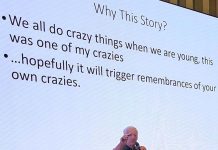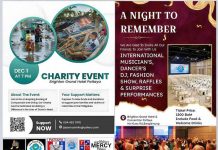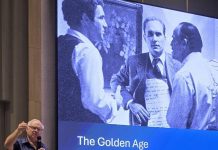A standing-room-only crowd at the January 8 meeting of the Pattaya City Expats Club was treated to a photographic journey through Argentina, Uruguay and Chile, narrated by club member and guest speaker Charles Elwin. Charles has an MA from Oxford, and as Head of Geography and Humanities at several schools and colleges he has led students on numerous overseas study groups and has traveled extensively in Asia and Europe; this was his first trip to South America. Charles divided his talk into three sections, Landscapes, Townscapes, and Cultural contexts.
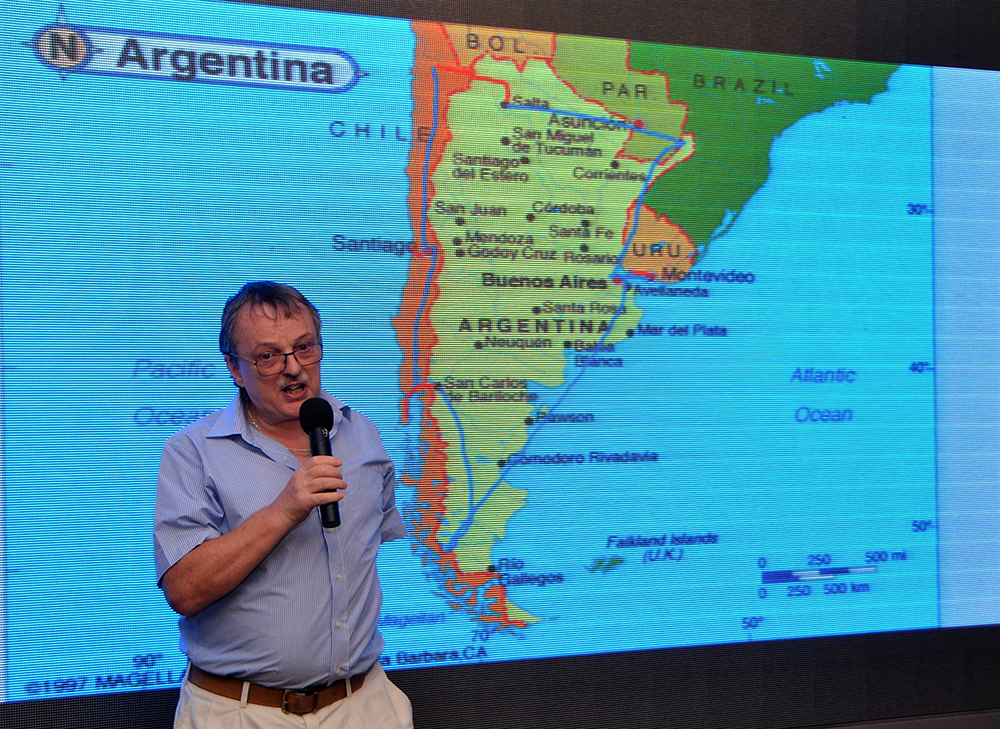
Starting Landscapes at Iguazu Falls on the border of the Argentina and Brazil, the largest waterfalls system in the world, Charles showed a variety of photos and videos of the falls. Noting that Iguazu National Park has been designated a UNESCO World Heritage Site, Charles said that almost every landmark he visited seems to be a World Heritage Site. “Pattaya could be a World Heritage Site,” he quipped.
Moving to the Atacama Desert, Charles said the claim that this is the driest place in the world is “absolute nonsense.” He showed photos of large salt pans (or salt flats) which he said are formed by evaporation of rainfall during the hot afternoons. Another photo showed large salt formations rising up from the ground.
Parts of Argentina’s central valley, he said, are very lush, much like Ireland. Further south are snow-capped volcanoes. And in Patagonia, the region encompassing the vast southernmost tip of South America, Charles’ photos described a variety of landscapes, from the cold, high desert where he said it takes five hectares for every head of cattle, to the spectacular glaciers, which he said comprise the largest glacier field outside the Arctics.
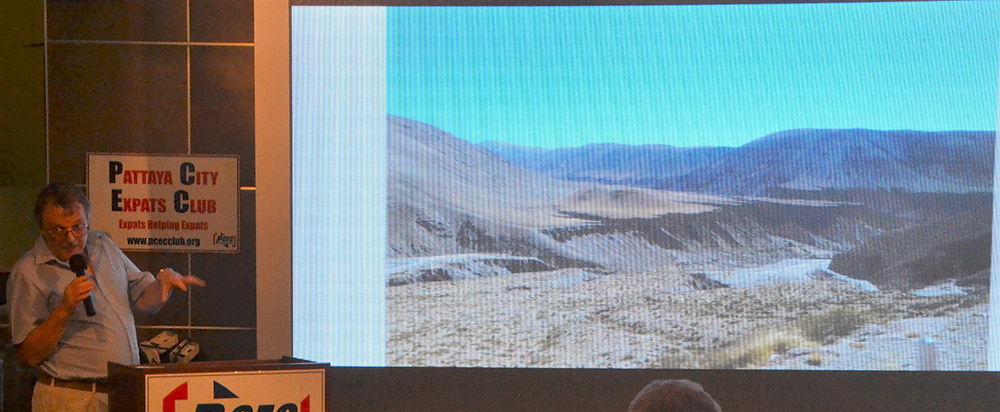
The second part of Charles’ talk focused on townscapes. “Latin America is a very urban place,” he said. Most of the cities and towns are over 400 years old, created by the Spanish as soon as they arrived. “Philip II was a control freak,” he said, noting that all the cities were originally built with the same layout: the city itself is a large square. In the center is a city square with a cathedral and possibly a palace. This is where the rich people live. The poorer people live in the outer sections of the city.
Today, of course, Buenos Aires has mushroomed into Argentina’s big, cosmopolitan capital city with a population of almost 3 million people. Charles noted that the city has a large Jewish population, and many recent Muslim refugees from Syria.
In Santiago, Chili, the city square features a statue of former President Salvador Allende, who died in 1973 when the Chilean air force bombed the palace, according to Charles. He explained that in the 1970s, all three of the countries that he visited had military rulers, and today everyone he talked to – even taxi drivers – won’t talk about “the time of the generals,” a very bad time.
In Montevideo, Uruguay, Charles, citing what he called “my fascination with old buildings,” was saddened by a “For Sale” sign on an old building. They want to tear it down, he said, like they did with most of the old buildings in Singapore. “Hopefully they will preserve them here,” he said.
Charles said Valparaiso was the city he loved above all. He loved the colorful buildings clinging to hillside, the little streets that are too narrow to drive, and the city’s extensive vehicular system. He said the hotel there was like an 1890s time warp.

In Atacama, the towns are small with adobe buildings. Agriculture is the main industry, and one photo showed a farmer leading a llama down the street. Many of these towns were founded by Jesuits, he said, and there are Jesuit churches all over. One of them, situated on an island about the size of Wales, was built of wood, with no nails. In contract to all the old towns and cities, he said Calafate In Patagonia, was built within the last 20 years for tourists.
The final section of Charles’ talk focused on cultural aspects of the three countries. In southern Chile and Argentina, according to Charles, the Spanish were ruthless in exterminating the American Indians. In Buenos Aries, there’s a statue of a Conquistador sitting on a bench. Charles said the Conquistador was so ruthless and eventually upset so many people that he was sent back to Spain, where he died. In Chile, on the other hand, every town has a statue of British Lord Cockrain, who liberated the country from the Spanish. Today, Charles said, all three countries have global connection, including recent influences from Asia. He said people in street seemed very homogeneous, more than in Europe.
Argentina was at one time the richest country in world, and Chili is now the wealthiest South American country with many country clubs, Mercedes, etc. His photos showed the divide between the rich and the poor, including one of a dog walker with about six dogs on leashes belonging to the very rich. Another photo showed a red – communist symbol; Charles said there are still a lot of demonstrations, but the countries are stable now. They also value a free press.
“It’s a very cultural place,” said Charles, citing Teatro Col๓n, a grand 1908 opera house with nearly 2,500 seats in Buenos Aires. He also visited the home of revered Chilean poet Pablo Neruda, who won the Nobel Prize for Literature in 1971.
After Charles’ presentation, Pira Suthirangkul, Assistant to Chalermwat Wimuktayon, litigation advisor to the acting Pattaya city mayor, described the planning for the 100-day mourning for his Late Majesty the King. The event will be held in the area of Bali Hai pier 20 January 2017. The memorial will start at 6pm (there will also be a monk blessing at 11:00 am and 5:00 pm, as per the Buddhist religion). He mentioned that foreigners are invited to join with Thais for this memorial.
MC Roy Albiston then brought everyone up to date on upcoming Club activities and other events, which was then followed by the Open Forum, where questions are asked and answered or comments made about Expat living in Pattaya.
For more information about the PCEC, visit their website at www.pcecclub.org.


